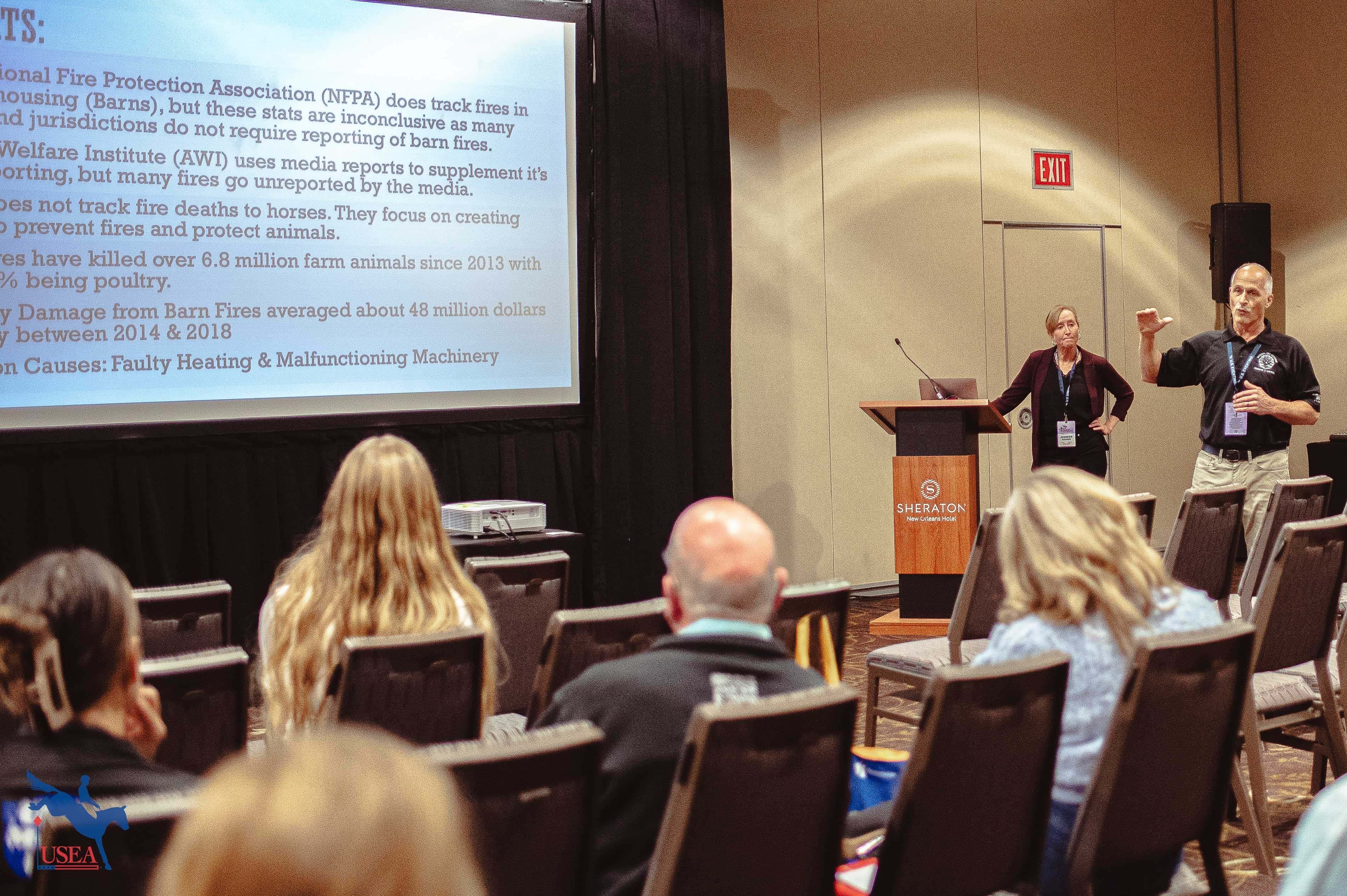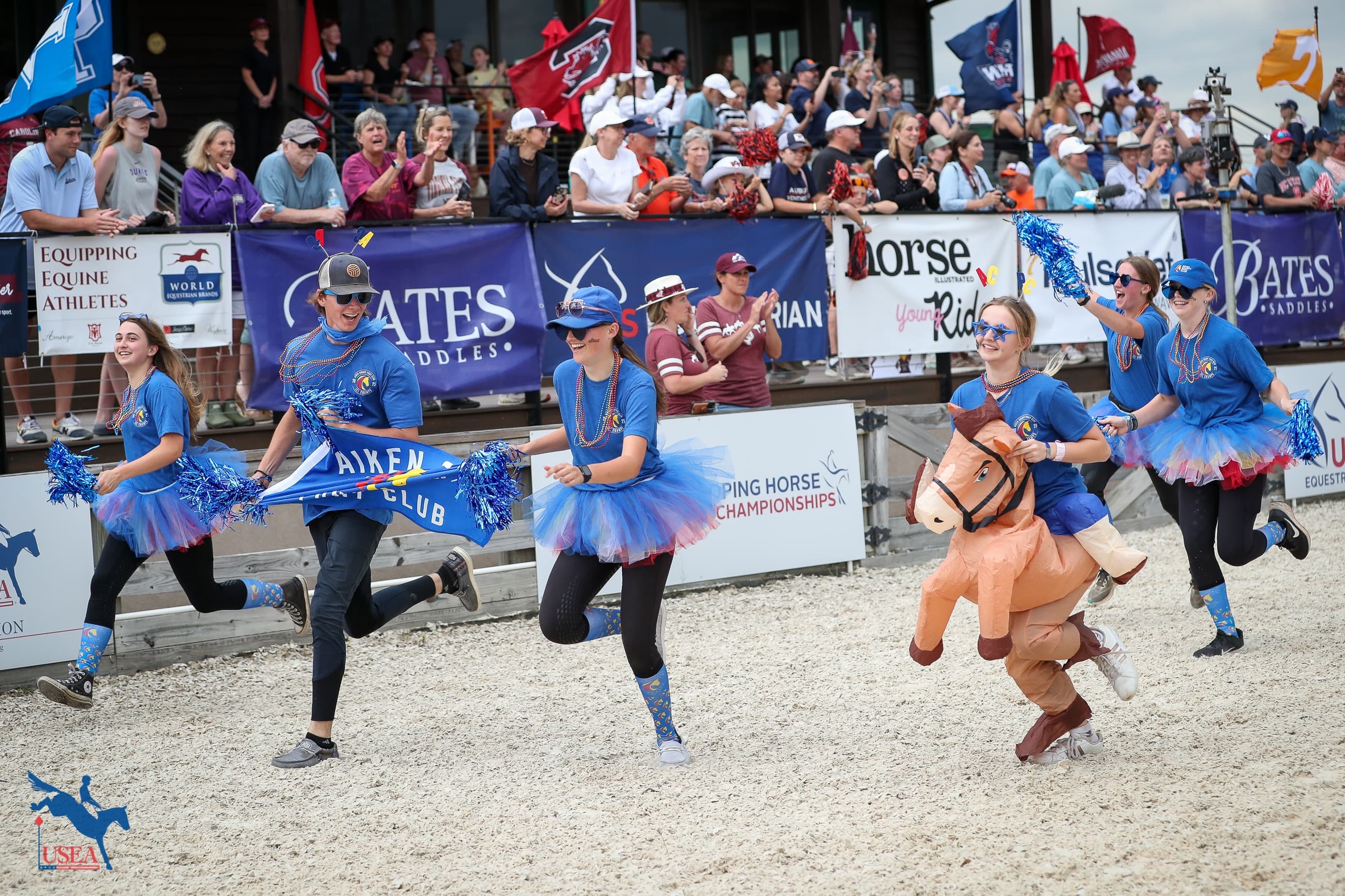Young Horses Take Their Own Courses: Developing Specific Exercises for Each Horse
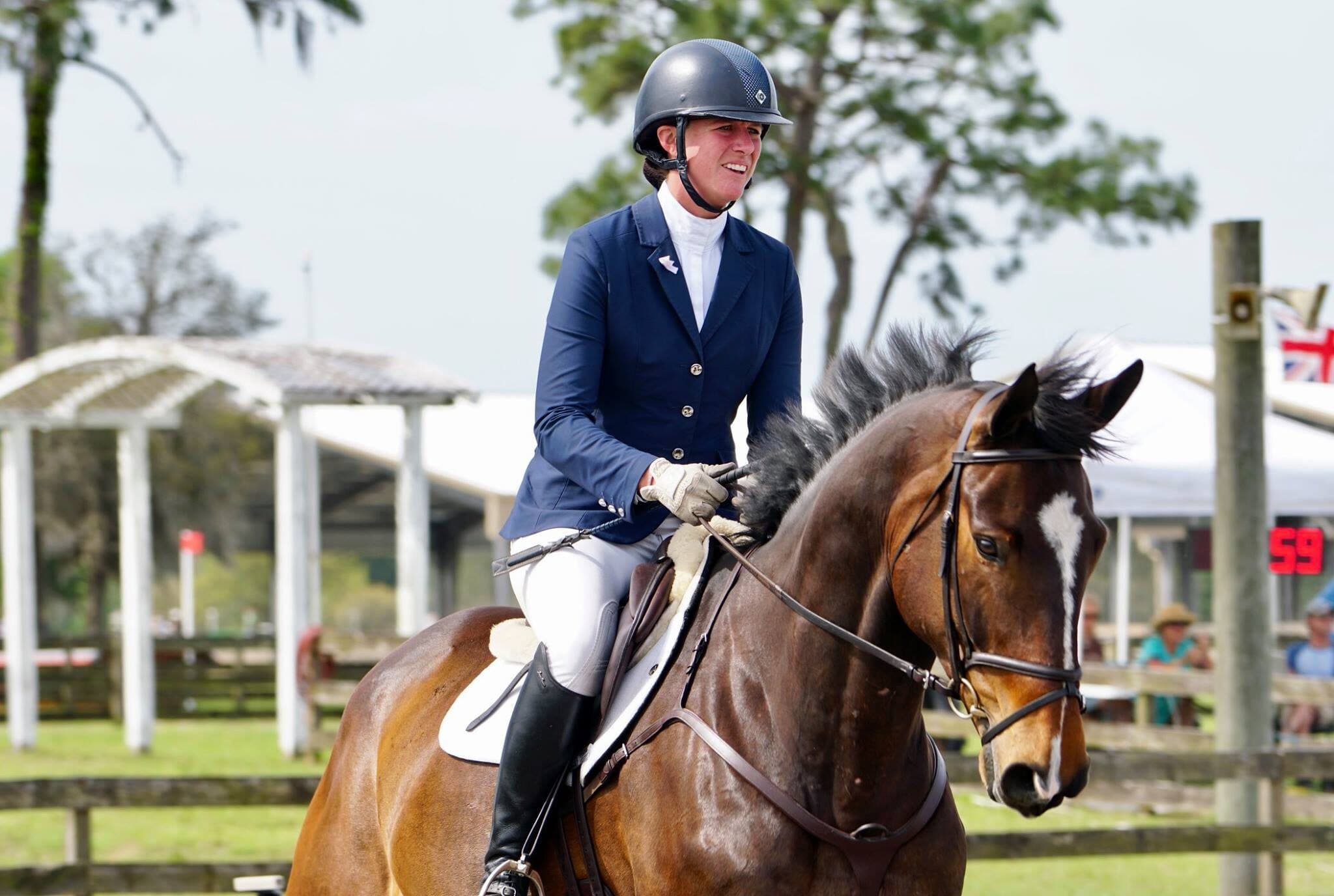
Two-time USEA Lady Rider of the Year, Olympic and Pan-Am Games rider, Lauren Kieffer is taking the USEA along on “bringing up babies” as she shares a year in the life of four of her 6-year-olds in their journey to become top level event horses. Did you miss part 1? Read it here.
Well, I made a mistake with one of the young horses. Eventers in general are very good at admitting when they are wrong (cue eye roll), but if you are going to work with young horses it is a necessity to acknowledge when you have made a mistake so that you can fix it. The mistake I made is one most of us have made before, and will make again, I moved a horse up too soon.
Gaudi and I had one competition together under our belts at Three Lakes H.T., where she confidently won the Novice. As I said in my first blog, she’s a mature horse and has been quite brave, so I entered her in the Training level at Exmoor H.T. The course was a bit more difficult than I expected it to be, but I wasn’t too concerned since she’s a brave horse. She had two green stops on course, the first at a log drop to a mound to a skinny, the second at an angled rampy jump into water. She jumped both well on the second attempt. The first thing I did after cross-country was to sheepishly call my owner and admit my mistake, luckily she’s been in the horse business long enough to know a little bump in the road does not mean much in the long run. But both fences were something Gaudi had not encountered before, so I couldn’t blame her for needing more time to figure out the question.
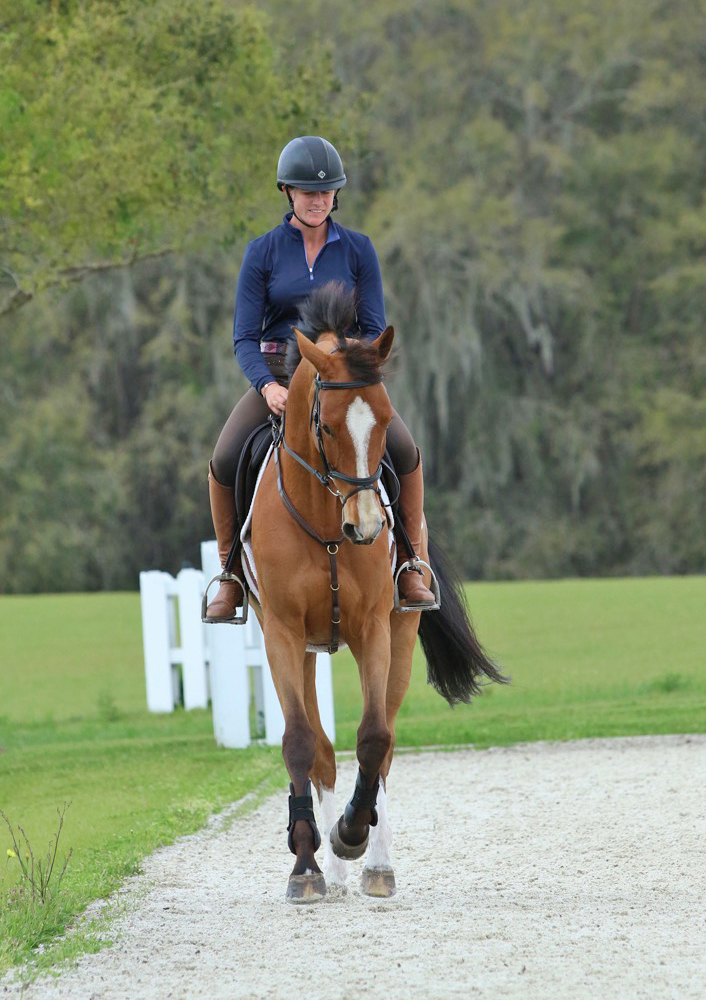
Lauren Kieffer and Get Gaudi. Photo by Sue Clark.
Between the Exmoor H.T. and the Ocala International H.T. I did several cross-country schools and introduced her to more difficult questions. I competed her in the Novice at Ocala to make sure I hadn’t damaged her confidence. She had a great run and handily won on a 20.5 so everything is back on track.
Apollo also had another good run at Training level at both Exmoor and Ocala International, finishing first and second. He is a very big horse and not as physically mature as the others. He has a huge stride, and he finds it difficult to condense or collect his canter while maintaining power, which is what makes the show jumping a more difficult phase for him. His schooling focuses on a lot of canter work to try to create a wider range of canters for him to work from. As he becomes more confident and physically able to go from a larger to smaller canter quickly, he also has to learn to go to that smaller canter and have power so he jumps the fences cleanly. Apollo finds the cross-country easier because he is able to jump out of the bigger stride that he is more comfortable in, so therefore he is able to find more scope.
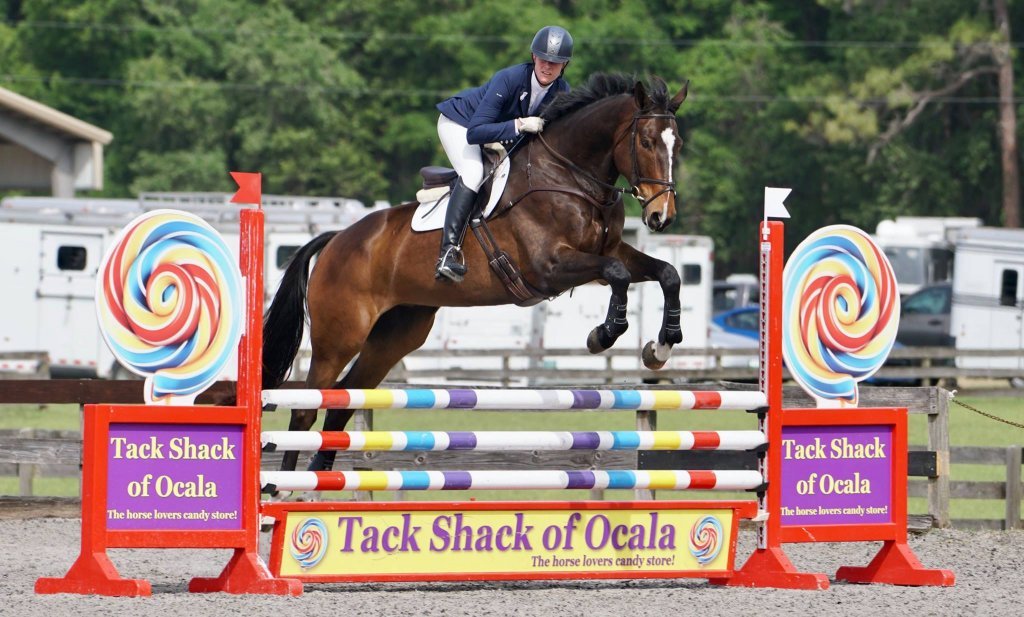
Lauren and Apollo. Photo by Lauren DeLalla. 
Probably one of the biggest mistakes I see people make with young horses is that they expect them to jump from a more collected canter then they are able to achieve in their flatwork. If you don’t have that canter in your flatwork you won’t have that canter in your jumping, and it almost always results in an impulsive or quick horse that runs before and/or after the fences. They don’t feel they have the momentum they need to do the fence, which then results in the rider trying to make them go even slower. It turns into a vicious cycle that usually ends up with the rider getting bigger and bigger bits, and a horse that doesn’t make a nice shape over the fence and can’t jump a fence out of a nice rhythm on a soft rein.
I never try to rate or change a young horses stride between fences until I have the ability to do that on the flat. Too much time is spent trying to put young horses to a perfect distance to a small fence, and then things become too complicated. Until the fences are bigger, accuracy is not a necessity – only balance and straightness is. I prefer that the horse can jump around a course maintaining the same pace and balance on a relaxed rein before trying to rate them. That is how a young horse finds a good shape over a fence and learns footwork. If the rider is in their mouth before, over and after the fence, then the shape is interfered with and the horse never learns his own balance. Go to the end of the post for one of Apollo’s canter exercises.
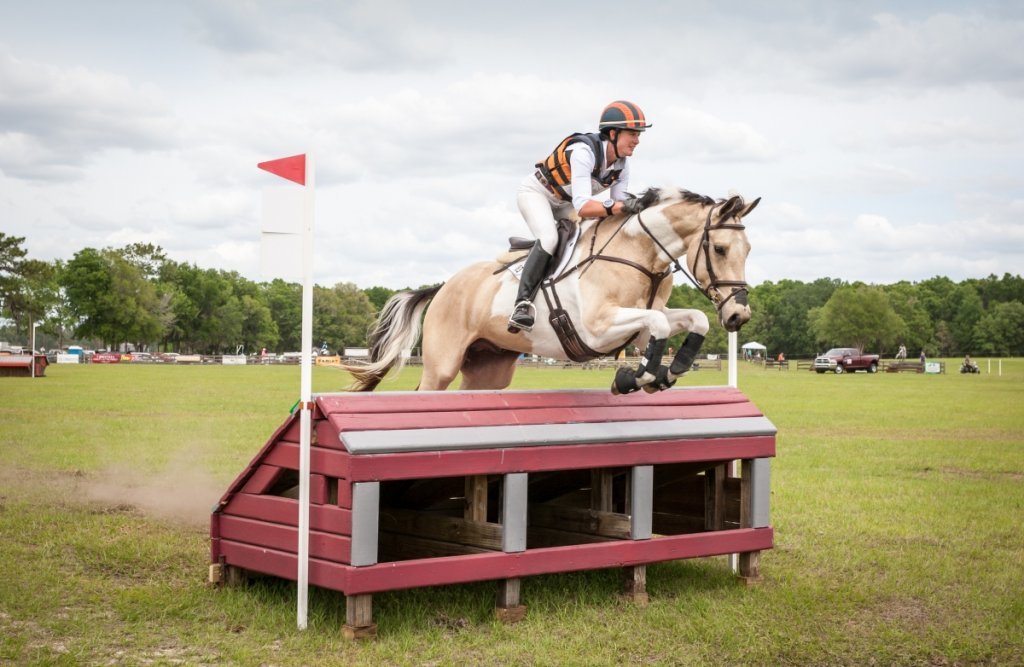
Lauren and Mocha. StockImageServices.com Photo.
Mocha had another great go at Preliminary at Ocala International to finish in second on his dressage score. He would be the most mature physically and mentally of the group. Since he is a homebred I have known him since he was born and from the ground up he has been handled with the same intention and philosophy. I know every experience this horse has had and every fence he has been pointed at, so that is a huge advantage for me. He is a wonderful combination of being very careful and very brave, so the jumping phases have always come fairly easily. His biggest fault is his conformation. He is built downhill and he has a thin neck, so most of the focus this winter has been developing a lot of swing in his neck and back to bring up his dressage scores. He has quite good gaits, but can be marked down by the judges for appearing downhill. On the other hand, he can also be marked down for appearing short necked when I bring him uphill, so it’s a fine line. The exercise I use the most with him is in the walk to help him let go thought his back and top line without losing his balance and to create a very good quality of contact. If you want a more in depth description of this exercise look below.
Gomar has been very successful since beginning his eventing career but is the greenest of the bunch since he is both new to me and new to eventing. I don’t know what experiences he’s been through in his upbringing or how he got to where he is. The worst thing I could do is go into this new relationship with assumptions. My first job is to figure out his strengths, weaknesses and knowledge. My quick assessment when I tried him was that he was a very athletic horse with three impressive and elastic gaits, and a very scopey, careful jumper. More importantly I found his attitude very willing and trainable.

Photo by Sue Clark. 
A lot of Gomar’s first month was spent hacking out in the open fields, trotting and cantering up and down the hills, and introducing him to logs, ditches and water. There was no pressure to any of it; he spent a lot of time in the beginning at the walk and trot because he was a bit spooky, I didn’t want to worry him, and I didn’t want to fall off! He had a lot of ring experience, but this was all new and a new place and a new rider. My only rules were that he had to always be putting one foot in front of the other, or going forward, and that he had to stay on my “line of direction.” It doesn’t matter to me how long it takes to get from point A to point B across the field, the first day may have been at a slow walk, but the second day would have at the walk and trot, and by the end of the week he would be happily cantering along. My only goal was that A) he knew that he must always be thinking forward and on the “line” I had decided, and B) that I would allow him the time to think to figure it out himself. Allowing them to “think” through what they see as a problem, teaches them to approach any problem looking for a solution, rather than looking for the quickest way out, either running away or running past it.
Removing that split second of doubt or guessing doesn’t seem like much, but that split second can make all the difference when you’re cantering down to a cross-country combination. If the horse is only thinking about the question ahead and the solution, you have a lot more successful and happy partnership. We all know the difference when we see it. I’m sure you can all picture a horse that comes to difficult fences and seems to not be looking at the fence, or looking backwards. You never feel sure if it is going to leave the ground when you are watching him, which is uncomfortable enough to watch, and an even worse feeling to ride. You can also picture the horse that seems to come to the most complicated combinations and you can tell before they even jump the first fence that they have it figured out. That’s the horse we want to create.
Mocha’s “Swingy” Exercise
Lauren Kieffer's Swinging Walk Exercise from USEA on Vimeo.
I want to feel like my arms are those thick exercise bands and that he is comfortable taking my hand forward without being heavy. I create that first in the walk by keeping an elastic hand and making him walk forward, almost uncomfortably so, until he starts swinging his back and neck along with his step and maintaining an even contact with my hand. You will know when that happens because you will feel their step go from a bit quick and uncomfortable to suddenly very long and swinging. You will have to swing your hips with them because there will be so much movement in their back. The hardest part about this exercise is just sticking with it the first time, you can both be a bit unsure and it can take a while, but the key is a constant contact without restricting.
Apollo’s Canter Exercise
This exercise is very good no matter how young or how big or unbalanced the horse. For those horses that feel like they won’t “fit” in the dressage ring when they canter, this a good exercise to start creating a smaller canter.
Lauren Kieffer Canter Exercise from USEA on Vimeo.
Go out into the field and find a small hill or grade, it shouldn’t be steep, especially when beginning to teach this exercise. I prefer to do this exercise in two point or slightly out of the saddle, especially for the greener horses. The most basic version of the exercise is to go a little faster up the hill and then a little slower down the hill. Simple, but not easy. Especially for the younger horses, do not confuse having their head down and going slower with collection, I actually want to bring their head up to make it easier for them to bring their shoulder up which in turn will bring their hind end under them. If I just pull their head down I am actually making the collection nearly impossible. With their weight brought down in front they won’t be able to bring their hind legs under them, so they will just need to speed up to keep from losing their balance, and then hang on your hands for support. With the greenest of horses I will be happy with just being able to change their balance and not necessarily even their speed. It is also very important to give plenty of breaks, some may only be able to go once or twice before needing a break, but it’s important to not keep drilling past their strength because they won’t be able. For the more advanced horses you can really lengthen up the hill, and then really collect going down the hill, and you can also move to a steeper incline to increase the difficulty.

